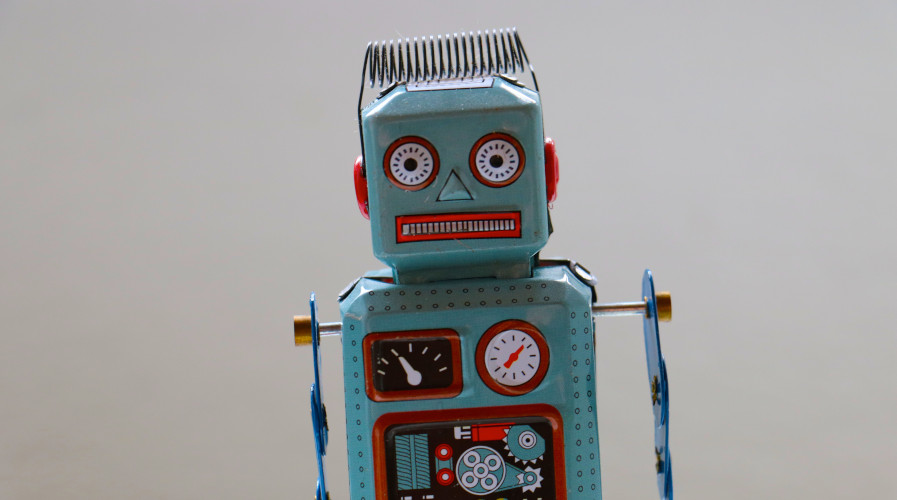Just as technology is a mark of the modern world today, so is the high rate of globalization. What happens when these two things come together? Three words: machine translation technology, which has become an integral part of daily life for professionals and hobbyists alike. From being used on a pocket translator to translating documents for research to accelerating website and software localization services, machine translation technology has become ubiquitous.
Apps like Google Translate are both practical and easy to use; this renders translation technology a formidable sector to observe and even invest in. This article will explore how machine translation systems operate and their trajectory in the business world.

Translation technology can make translation faster, cheaper, and more convenient. However, it must be used appropriately.
What Exactly Is Machine Translation Technology?
Machine translation technology, or machine translation, basically refers to any computerized program that provides translation from one language to another. Pretty simple concept, right?
Popular platforms include Google Translate, most notably, as well as Amazon Translate, DeepL Translate, and Bing Microsoft Translator, among others.
They are often used alone as “translations in a pinch.” However, they often provide faulty translations, sometimes in such a way that it would be impossible to find the critical mistakes unless you already know both languages. Also, they can’t be used to replace official certified translation.
But that doesn’t mean they can’t be of any use for high quality human translation! Instead they can be used to assist human translators. They provide a translated text, which the professional human translator then post-edits in order to perfect the translation. This allows the translator to work more efficiently without lowering the quality of the end translation.
So regardless of whether machine translation technology is used as a low quality stop-gap solution or whether it is used to assist human translators for high quality translation, it will only have an increasingly important role to play in our world.

Machine translation technology and AI will only become more ubiquitous in translation in the years ahead.
Do businesses prefer automated translations over human interpreters? Forbes reports that automated translations convey literal meanings, while people have the ability to translate both literal and implied meanings. If some implied meanings go unrecognized, this can leave social and cultural norms, idioms, and other less obvious speaking devices ignored. Such a situation can result in, not just information lost, but offense taken and disagreement all around.
Besides words, communication also hinges upon the tone of one’s voice and even facial expressions so as to land a message more effectively. Thus, while machines do offer easily accessible translation solutions at the spur of a moment, they cannot be relied on for more delicate situations or even day-to-day professional communication.
Lastly, another downside to automated translations is the absence of many tribal languages not widely spoken. Case in point: BBC asserts that there are 7,000 or so languages worldwide, but only about 100 of them are available on platforms like Google Translate and Bing Microsoft Translator.
Need Translations?
Need translations for your documents, website, or software. Explore our human-and-machine translation options. Click here to get started.
Request Translations
How Has Such Technology Developed Over Time?
Most people would think of translation apps as a 21st century marvel, but their origins date back decades. The late 1940s and early 1950s saw the first sparks of interest, where inquisitive leaps were made in automated text translations. After the world’s first programmable digital computer, ENIAC, was built in 1945, ideas for non-numerical uses of the computer started to swirl, eventually making way for the novel concept of automated translation.
While computerized solutions first made headway during this time, initial ideas for machine translation materialized in the 17th century. Even so, 1924 was the year that witnessed the first prototype of a “typewriter-translator,” followed in 1933 by other similar patents. Combining digital devices with multilingual needs was a solution that would take the world by storm.
The IBM 701 computer was a landmark achievement after it translated Russian text into English in January of 1954. The record speed for translation at the time was two and a half lines of text produced each second. In the context of the Cold War, the 701 computer’s feat was a boon for the national defense agenda but more so for the progress made since then.
Fast forward to the ‘90s: machine translations were now finally available to the general public. The first notable system was an English to German service, launched in 1992. In 1997, Babel Fish AltaVista was the first translator accessible online for free.
Check Out Our Other Articles about Machine Translation Technology!
Why Professional Translators Are Needed Despite Machine Translation
Funny Siri Responses and What It Tells Us About Machine Translation
What Are the Best Automated Translation Platforms To Use In 2023?
As mentioned earlier, there are a host of quality translation platforms to use. Here is a rundown of automated translation systems your business can use as localization services, dependent upon their product quality and popularity among professionals.
Google Translate boasts more than 500 million daily users; almost 50,000 businesses use it. People mainly use the program because it is totally free, but Google is a poor replacement for a truly rich linguistic experience.
Yandex Translate, a subsidiary of Yandex Cloud, labels itself a “high-quality neural machine translation” platform that serves up more than 90 language translations. At time of publishing, it cost just $0.39 per month to translate 100,000 characters. The application prides itself on having done business with leading companies such as WeGlot and Pressreader.
Another technology solution is DeepL Translate: they also harp an AI-powered and humanesque translation service. DeepL Pro is the company’s latest product: it allows up to 100 file uploads per month and has 2,000 glossaries available. DeepL Pro’s Ultimate version goes for a price tag of 49.99 euros per month.
Azure’s Cognitive Speech Services is a Microsoft product that lets you translate audio files into text, from one language into over 30 others. Their speech translation services also come with robust security and data encryption. Pricing plans fall between $1,600 and $2,500 for 2,000 hours of audio, dependent upon features like language identification, speaker verification, and voice profile storage, in addition to others.

There are numerous options on the market of machine translation tools to choose from.
Things To Look Out For In Translation Technology
One word thrown around often is neural. Neural, reminiscent of the human nervous system, refers to a type of processing method where the machine learns how to do a certain job through finding patterns in the information fed to it. The machine uses an exorbitant amount of nodes (millions, at that) to receive and analyze data, much like the human brain does.
Neural machine translation (NMT) uses a neural network to analyse a piece of text and predict certain language patterns. NMT also takes up less memory storage than older methods of automated translation. NMT has become so popular, more and more major companies are pivoting to it from less convenient systems.
Besides NMT, there are two other main types of machine translators: statistical, or SMT, and rule-based, or RBMT. The SMT method has borne the description of “stochastic”– this essentially means that the outcomes from processing data relies on random probability rather than a 100% certain probability.

Machine translation technology doesn’t need to be scary. It can be implemented in human workflows to make work easier and faster.
The RBMT approach mandates that grammar and syntax be present in the machine before starting any translating service. It had been in primary use during the ‘80s until replaced by the quicker SMT method. The main shortcoming that led to RMT’s demise was the lengthy, cumbersome task of setting up grammar rules and dictionaries in order for the computer to generate a viable translation.
RBMT is also the method least apt at interpreting sentences in a more human fashion, such as when metaphors and idioms appear. Out of the three, NMT is the future of automated translation.
Check Out Our Other Articles about Machine Translation Technology!
5 Best Free Translation Tools You Can Use Right Now [Free Download]
Free Google Sheets Machine Translation Spreadsheet
The Future Of Automated Translation
In 1996, Karen Schairer of Northern Arizona University wrote about artificial intelligence (AI) and the probability of machine translation completely uprooting its human equivalent. She concluded that mechanized translators at the time were less accurate and more costly than a purely human-produced translation.
Technology enterprises to this day still must grapple with the challenge of emulating native language speakers. Funny enough, The Economist published an article just last year discussing the future of translation to be a “human-machine hybrid.” This essentially describes what these companies have been attempting to do to localization services for so long, but will they succeed?
AI is not only helping to increase translated texts’ dependability but is also working on copying a human’s voice, cadence, and tone. Manipulations made to videos can also make a person talking seem as if they are doing so in a completely different language.

Language technology is not about replacing humans but assisting and magnifying their efforts.
The IFLA Trend Report has predicted that machine translation technology will meet around 90% of interlingual communication needs in the next five to ten years. One reason for this is an upsurgence in crowd-sourced data, ensuring that language repositories better match with the ability of native human speakers.
Interestingly, a market research report found that translation companies in the future will eventually struggle to keep up with a more rapidly evolving language landscape. When understanding that overall output in the translation industry has so far remained stagnant over the last ten years or so, it is evident that there is a lot of catching-up to do.
Besides translating, machines have the potential to also help preserve languages about to go extinct. As 43% of existing languages are expected to die out, translation technology can empower minority communities to develop their own methods of keeping language alive. Chatbots, games, and word banks are a few ways technology will aid in keeping overlooked cultures alive and well.
Concluding Thoughts
In summary, translation technology is fascinating to observe as a field that continues to evolve. This is in particular due to the fact that companies are competing to offer the most human-sounding machine translations out there. This struggle between machine versus man makes quite an interesting backdrop to the evolution of automated translation.
Google, Microsoft, Yandex, DeepL and other corporations offer machine translator apps that balance speed and accuracy for top-grade international business solutions. These programs vary based on pricing and engine power, though, for the most part, they all hawk similar accomplishments and feats.
The history behind modern translation technology is a fascinating one. Early computer development in the 1940s, capitalizing off of earlier ideas for mechanized translation from the 17th century, culminated in a Cold War defense tool. A government-funded Russian to English machine translator was the prototype for the many apps we download on our phone nowadays.
It is then obvious that the future of translation technology shines brighter than ever. Neural methods of data analysis and broad memory space, among other advantages, offer an effective combination for products. This trajectory, however, hinges upon their ability to keep up the pace of growing demand.
Other downsides of modern translator machines include an overemphasis on commonly spoken languages, to the point where thousands of indigenous dialects go unrecognized. Additionally, machines (so far) cannot pick up less obvious patterns of speech, like idioms, for example.
The AI industry is trying its hardest to imitate such nuances currently. Even so, this will still fail in the context of reproducing hand movements and facial expressions, two key components of verbal communication and messaging.
While human translators are the safest bet to convey information accurately, automations can save time and money. Therefore, the solution generally agreed upon in the industry is a human-machine hybrid, a chance to combine the virtues of both categories to make an extraordinary superpower.
About the author: Althea is from Lower Westchester, New York, just 17 miles outside of Manhattan. She uses her experiences living in the United States, Europe, and East Africa to write about language and other topics. Althea holds a Masters in International Relations from Nottingham Trent University and now lives and works an hour outside London. She speaks Swahili as a second language, is conversational in Spanish, and can read and write Arabic. Connect with her on LinkedIn here.



